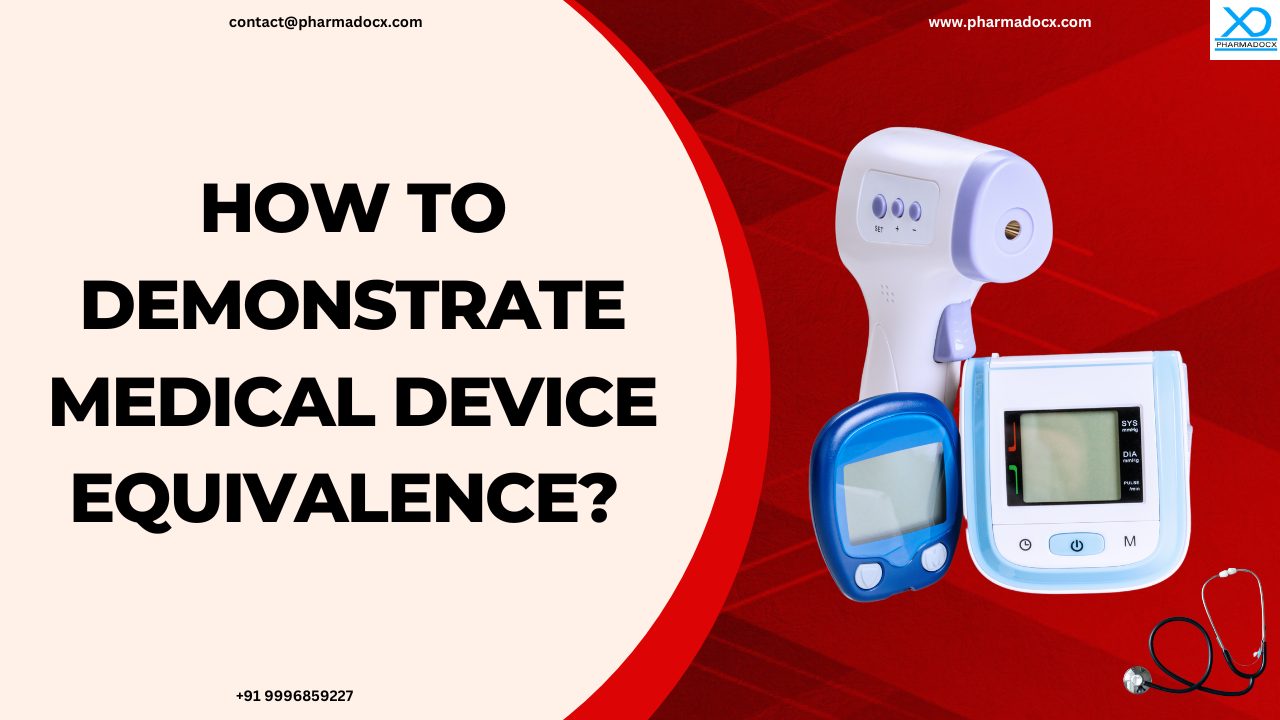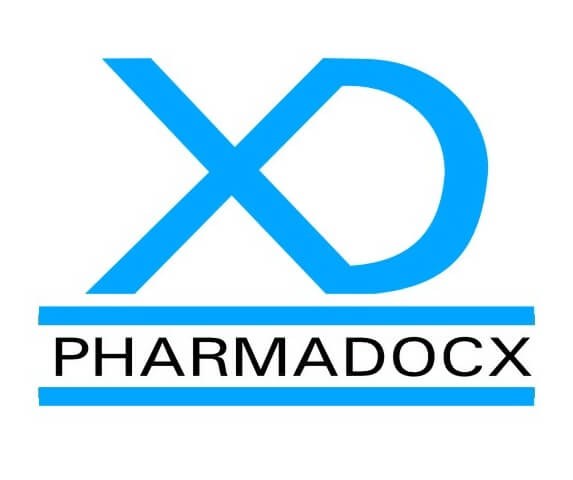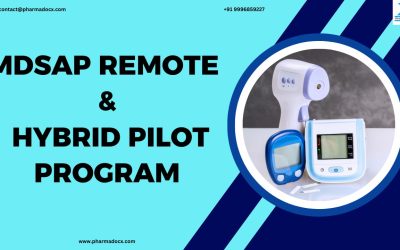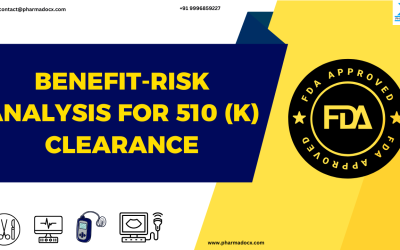In this blog, we have provided an overview of what is medical device equivalence. Additionally, we have discussed the criteria and requirements that have to be fulfilled. Moreover, we have highlighted the common challenges encountered while trying to prove equivalence.
What is medical device equivalence?
Medical device equivalence is the process of demonstrating a device is equivalent to an already legally marketed one with respect to clinical, technical, and biological characteristics. This process is used by medical device manufacturers to simplify their regulatory journey. Claiming equivalence would indicate the device in question is equivalent to an already existing device with respect to safety, performance, and functionality. Notably, proving medical device equivalence reduces the need for generating extensive new clinical data. Medical device manufacturers can utilize existing clinical data to support the safety and performance of their device. However, proving equivalence is not easy. It requires adherence to strict guidelines and fulfilment of specific requirements. Moreover, claiming equivalence does not preclude medical device manufacturers from performing a clinical evaluation.
3 key criteria for proving medical device equivalence
- Biological equivalence: The biological properties of the device in question and the existing device must be equivalent. Both the devices’ material’s interaction with the human body has to be evaluated. Basically, both the devices should have the same material/substances in contact with human tissues. Moreover, they should have similar kind and duration of contact as well as, if applicable, release characteristics of substances. In addition, to evaluating the materials in contact with the patient, the potential for similar biological responses has to be assessed.
- Technical equivalence: The technical characteristics, including design, materials, and performance specifications, of both the device should be equivalent. Specifications, properties, design, and conditions of use of both the devices have to be evaluated.
- Clinical equivalence: Both the devices should have the same kind of intended users, be used for the same clinical condition, and have similar performance. The purpose (similar severity, disease stage, same site in the body, and similar population) of the device should be equivalent. The device should deliver comparable results in its intended use. Robust data should be used to substantiate clinical performance and safety.
Hence, demonstrating medical device equivalence is a rigorous process that requires technical, biological, and clinical evaluations. Furthermore, it also requires proving a clear link between the medical device under evaluation and the equivalent device.
Additional criteria outlined by MDR
MDR has clearly defined the terms “same” and “similar”. Same refers to something identical. On the other hand, similar refers to something with a resemblance but not identical. Medical device equivalence with respect to each of these terms has to be based on scientific justification. Moreover, no clinically significant difference with respect to safety and performance of the devices has to be demonstrated.
However, if the device in question has a difference as compared to the equivalent device, a strong scientific justification has to be provided. Moreover, if a modification has been introduced to address a safety or performance issue of the equivalent device, then also a strong scientific justification has to be provided. The difference or modification should not impact the clinical safety or performance of the medical device.
Key requirements for demonstrating medical device equivalence
We have highlighted key requirements medical device manufacturers must focus on while demonstrating medical device equivalence.
- Align device characteristics: Every characteristic of the device in question should match with the equivalent device. The intended use, risk profile, and performance are some of the basic parameters that have to align.
- Mixing of data to be avoided: Data from one equivalent device should be used. Mixing and matching data from multiple devices is not allowed.
- Thorough documentation: A comprehensive demonstration of evidence demonstrating equivalence is required. The comparisons have to be properly documented.
How to demonstrate equivalence with an already legally marketed medical device?
- Identify an equivalent device: Select an appropriate equivalent device that is already legally marketed and is as similar as possible to the device in question. Sufficient clinical data should be available.
- Perform a detailed comparison: Perform an in-depth comparison of the clinical, technical and biological properties of both the devices. Clearly record the findings obtained for each property category. Meticulously document the comparison findings and insights.
- Address gaps in data obtained from comparison: Identify any gaps in the data obtained from comparative analysis. Then, perform additional studies to collect further evidence to support the equivalence claim.
- Collect relevant data: Collate data for both the device in evaluation and the equivalent device. The data record should cover clinical trial data, technical specifications, and post-market surveillance data. Moreover, any other evidence that supports the safety and efficacy of the devices can be included in the data record.
- Collate all information and compile the documentation for regulatory submission: You need to prepare a technical documentation file for the device to obtain regulatory approval. The dossier should include all the equivalence analysis data and insights along with the supporting documentation for the device.
3 common mistakes to avoid while trying to prove equivalence
We have listed some common pitfalls medical device manufacturers face while trying to prove medical device equivalence.
- Insufficient clinical or technical data will invalidate equivalence claims. This is especially applicable when referencing devices from other manufacturers.
- Merging attributes from multiple devices to create a composite equivalence assessment is prohibited.
- Failure to identify and justify differences between the two devices can lead to flawed safety and performance assessments.
Challenges encountered while proving medical device equivalence
Proving medical device equivalence may seem convenient. However, it comes with its own set of challenges. Moreover, specific requirements and stringent criteria have to be fulfilled to demonstrate equivalence. This requires careful planning and thorough documentation. Furthermore, regulations demand a high level of evidence and transparency while the demonstrating the equivalence. Thus, the process is cumbersome and laborious, as considerable amount of time will be required to collate information. Additionally, the data and information have to be properly documented. This requires sufficient resources and budget. We have listed some of the common challenges encountered.
- Post-market data: Post-market clinical investigations may be required to identify residual risks associated with the device and confirm safety and performance related to the device difference or modification. Real-world performance data is collected during post market surveys to ensure the medical device performs safely and effectively over time.
- Time and resource demanding: The process of demonstrating equivalence is time consuming and arduous requiring considerable budget and resources.
- Legal considerations: For using a medical device from another manufacturer as an equivalent device, a legal agreement is required. For assessing detailed technical documentation for the medical device, you need to have a legal agreement with the manufacturer.
Should you opt for proving equivalence for your device?
Proving medical device equivalence may seem to simplify the regulatory approval process, thereby seem to be the best approach. However, it may not be the easiest process. Careful planning, meticulous documentation, and precise justification will be required for regulatory approval. Furthermore, for devices having substantial differences with their proposed equivalent counterpart, this will not be the best approach. Additionally, for cases having limited comparative data and information, it will be best to opt for alternative approaches. Thus, it is crucial to weigh in the pros and cons before opting for the medical device equivalence approach.
We provide comprehensive support to medical device manufacturers. Our aim is to ensure you have a seamless regulatory journey. Email at [email protected] or call/Whatsapp on 9996859227 to launch your medical device in the market without any regulatory hiccups.





